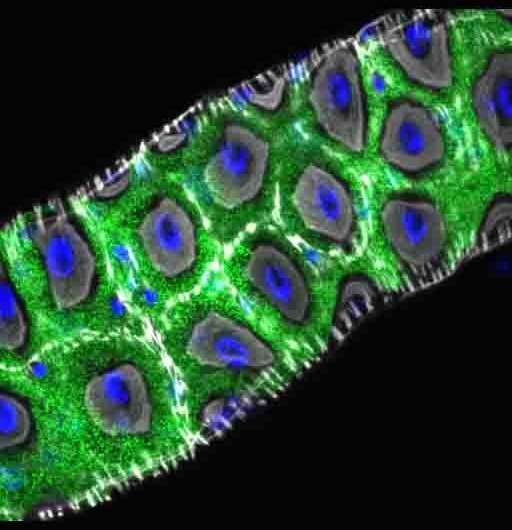Hodor 'holds the door' open for a potential new way to curb mosquito populations

The identification of an insect-specific metal-sensing receptor in the gut lining highlights a possible new way to curb populations of disease-transmitting insects such as mosquitoes.
In this new study led by the MRC London Institute of Medical Sciences, researchers discovered that removal of this nutrient-sensing receptor called Hodor was fatal in Anopheles mosquitoes as the insects did not make it past their larval stage.
The findings, published in the journal Nature, identify an attractive drug target that is easily accessible in the gut lining which can act to curb mosquito populations. It again emphasises the value of investigating insect specific biology, and not just human research, to lead to healthcare treatments and interventions.
The ability for cells in the gut to sense nutrients is essential to maintain homeostasis and their ability to adapt to a changing environment. Micronutrients, such as metal ions, are known to have important roles in growth and development, but our understanding of how metals are sensed is limited. These nutrient sensors are most commonly found in the gut lining, specifically in the enteroendocrine cells. However, Professor Irene Miguel-Aliaga, the principal investigator on this study, and colleagues were curious about enterocytes—which play more of a role in digestion and absorption of nutrients—and whether they have any ability to sense nutrients themselves.
They performed a genetic screen of over 100 candidate proteins thought to be involved in nutrient sensing. This screen uncovered a receptor that seems to regulate the development of larvae, particularly in nutrient-poor conditions that was expressed in the gut lining. Inhibiting the expression of this protein resulted in developmental delay, as referenced in the name 'Hodor' (an abbreviation for 'hold on, don't rush').
Hodor is a zinc-sensing protein that uses the metal to transport chloride within and out of cells, facilitating pathways that regulate nutrient-sensing and growth. Increasing the levels of zinc in the flies' diet led to increased feeding, which was reversed when Hodor was blocked. The authors suggest that the receptor helps to direct the animals to nutrient-rich food sources (metals such as zinc are produced by yeasts, which are found on fruit and other foods). Finally, they demonstrate that deleting the gene in mosquitoes is fatal, suggesting that such disease vectors could be targeted and controlled by using ingestible drugs and also could be harmless to humans due to its insect specificity.
More information: An intestinal zinc sensor regulates food intake and developmental growth, Nature (2020). DOI: 10.1038/s41586-020-2111-5 , nature.com/articles/s41586-020-2111-5
Journal information: Nature
Provided by MRC London Institute of Medical Sciences





















